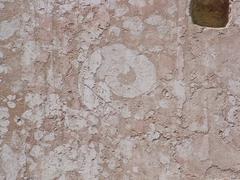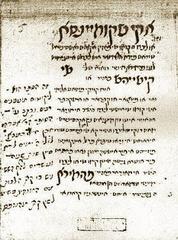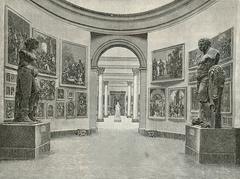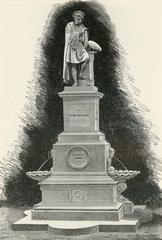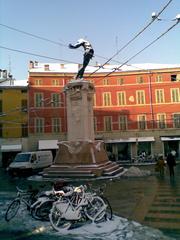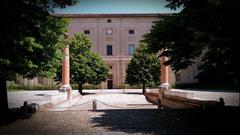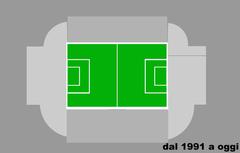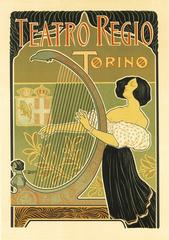Certosa di Parma: Visiting Hours, Tickets, and Historical Site Guide
Date: 04/07/2025
Introduction
Nestled on the peaceful outskirts of Parma, the Certosa di Parma stands as a remarkable testament to the city’s complex history, artistic legacy, and cultural resonance. Founded in 1285 by Carthusian monks in search of solitude and spiritual contemplation, this monumental former charterhouse has seen centuries of transformation—from a medieval monastery to a tobacco factory, reformatory, and now the headquarters of the Italian Penitentiary Police training school. Today, its rare public openings are eagerly anticipated by history enthusiasts, architecture aficionados, and literary pilgrims alike. The Certosa is further immortalized as the evocative setting of Stendhal’s La Chartreuse de Parme (The Charterhouse of Parma), a cornerstone of 19th-century literature.
This comprehensive guide offers a detailed exploration of the Certosa di Parma’s history, architectural evolution, and cultural significance. It provides essential practical information on visiting hours, tickets, accessibility, and travel tips—especially for special events like the annual Giornate FAI di Primavera. Discover how to make the most of your visit, and enrich your Parma itinerary with insights into this unique monument and its neighboring attractions.
For up-to-date information and deeper insights, this guide references authoritative sources, including Parma Welcome, Il Fatto Quotidiano, and 19thnovels.com.
Historical Overview
Foundation and Early Monastic Life
The Certosa di Parma was established in 1285 by Carthusian monks—an order founded by St. Bruno in the 11th century, known for its strict adherence to solitude, silence, and prayer. The original complex was constructed on Parma’s rural outskirts, and included a church, cloisters, individual monks’ cells, and communal workspaces. The architecture was designed to foster contemplation and ascetic living, and quickly made the monastery a regional religious center (The Camera is Only a Tool).
Destruction, Suppression, and Transformation
The Certosa endured significant destruction during the 16th-century conflicts in northern Italy (Il Fatto Quotidiano). After recovery and rebuilding, the monastery was suppressed in 1769 as part of Enlightenment reforms in the Duchy of Parma. In 1805, the site was repurposed as the Fabbrica Ducale dei Tabacchi (Ducal Tobacco Factory), one of northern Italy’s most important tobacco facilities until its closure in 1891. This industrial phase led to significant modifications, overlaying the monastic fabric with new structures and uses.
19th and 20th Century: From Reformatory to Police Academy
After the tobacco factory closed, the Certosa was converted into a reformatory in 1900, reflecting new social and penal policies. Since 1975, it has served as the training school for the Italian Penitentiary Police, which has helped preserve the complex but strictly limits public access (Il Fatto Quotidiano).
Architectural Evolution and Artistic Heritage
Over the centuries, the Certosa has evolved architecturally, reflecting Gothic, Renaissance, Baroque, and neoclassical styles. The most dramatic transformation occurred between 1673 and 1722, when architect Francesco Pescaroli led a Baroque renovation, introducing illusionistic frescoes and elegant spatial arrangements (The Camera is Only a Tool). The Renaissance cloisters, neoclassical facade (added in 1847), and richly decorated church interior all bear witness to Parma’s artistic currents.
Despite later industrial and institutional modifications, many original features survive—including the major and minor cloisters, the Baroque church, and the Renaissance sacristy.
Literary and Cultural Significance
The Certosa di Parma is world-renowned as the symbolic setting of Stendhal’s La Chartreuse de Parme (1839), where it represents themes of withdrawal, reflection, and the search for meaning in the turbulent Napoleonic era (19thnovels.com). The evocative literary association adds depth to the site’s cultural importance.
The Certosa within Parma’s Heritage
As a city celebrated for its Romanesque cathedral, Renaissance masterpieces, and culinary traditions, Parma’s Certosa stands out for its rare blend of religious, industrial, penal, and literary history (Italien Expert).
Visiting Information: Certosa di Parma Visiting Hours, Tickets, and Access
Visiting Hours and Ticketing
Access to the Certosa di Parma is generally restricted due to its function as a police academy. However, it opens to the public during special events, particularly the Giornate FAI di Primavera (FAI Spring Days) in March.
- Opening Hours (During FAI Spring Days): 10:00 AM – 5:00 PM
- Tickets: Advance booking is required; tickets can be reserved on the FAI website or through authorized platforms. Entry is often free or by voluntary contribution, but places are limited and sell out quickly.
Booking and Tours
Monitor the FAI website and the local tourism board for announcements. Guided tours, led by experts, provide historical and architectural context and typically last 40-60 minutes. Valid ID is required upon entry.
Accessibility
Wheelchair and mobility access is limited due to the site’s age and institutional layout. Contact event organizers in advance for specific accommodations.
Travel Tips
- Arrive early during open days to ensure entry.
- Combine your visit with other Parma landmarks, such as the Cathedral and Teatro Regio.
- Plan transport in advance as the Certosa is located on the city’s outskirts.
Architectural Evolution and Layout
The Certosa di Parma, also known as the Certosa di San Girolamo, was initially built between 1285 and 1304. Although much of the original medieval complex has vanished, the site retains significant elements from its Renaissance, Baroque, and neoclassical phases (Wikipedia; Conosci Parma).
The typical Carthusian layout features a central church, major and minor cloisters, monastic cells, refectories, and ancillary buildings, all enclosed by high walls to ensure monastic privacy.
Facade and Exterior Features
The main facade, added in the 19th century, is a striking neoclassical composition with balanced symmetry and restrained ornamentation (Italia Italy). The monumental portal is often closed due to the site’s institutional use, but traces of the original gardens and orchards remain.
The Church: Baroque Splendor and Artistic Masterpieces
Rebuilt in the early 18th century, the church is dedicated to Saint Jerome and showcases Baroque scenography. Its nave, side chapels, and luminous apse are adorned with illusionistic frescoes by artists such as Alessandro Baratta, Gian Battista Natali, and Ilario Spolverini (Conosci Parma). These works are considered among the finest examples of Baroque illusionism in Emilia-Romagna.
Liturgical Furnishings
Original choir stalls, marble altars, and liturgical objects are preserved in the church and sacristy, though access is often restricted (Italia Italy).
Cloisters: Spaces of Contemplation
- Major Cloister (Chiostro Grande): Renaissance quadrangle with arcaded walkways and harmonious proportions (Conosci Parma).
- Minor Cloister (Chiostro Piccolo): Surviving from the 15th century, this intimate space features Gothic arches and fragments of medieval frescoes (Wikipedia).
Monastic Cells and Communal Spaces
While many original cells have been repurposed, their layout—self-contained units with small gardens—can still be discerned. Communal rooms, such as the refectory and library, retain architectural traces of their former use (Italia Off Route).
What to See During Your Visit
- Baroque Church Interior: Admire the grand frescoes and ornate altars.
- Major and Minor Cloisters: Enjoy the tranquil Renaissance and Gothic architecture.
- Sacristy and Artifacts: View Renaissance altarpieces and decorative details (when accessible).
- Architectural Details: Observe the layering of styles throughout the complex.
- Literary Connections: Appreciate the Certosa’s enduring association with Stendhal’s novel (Conosci Parma).
Practical Visitor Information
- Location: Strada alla Certosa, Parma (approx. 4 km from the city center).
- Opening: Only during special events such as Giornate FAI di Primavera. See Comune di Parma’s event page.
- Tickets: Free or by donation; advance booking required.
- Accessibility: Partial; inquire in advance for assistance.
- Contact: Parma Welcome; Tel: +39 0521218889; Email: [email protected]
The Certosa di Parma in Literature: Stendhal’s Enduring Legacy
Stendhal’s La Chartreuse de Parme (1839) brought the Certosa to international literary fame. In the novel, the monastery serves as a final refuge for Fabrizio del Dongo, symbolizing withdrawal and contemplation. Scholars debate whether Stendhal was directly inspired by this monastery or by the nearby Abbazia di Valserena (ilparmense.net), but the novel’s impact on the Certosa’s reputation is undeniable. Today, literary enthusiasts visit to experience the atmosphere that inspired one of the masterpieces of French realism (19thnovels.com; viaggi.corriere.it).
Nearby Attractions
While visiting the Certosa, explore other highlights of Parma:
- Parma Cathedral (Duomo) and Baptistery: Romanesque and Gothic masterpieces.
- Teatro Regio: Historic opera house.
- Palazzo della Pilotta: Museum complex.
- Culinary Delights: Sample Parmigiano Reggiano and Prosciutto di Parma (ourescapeclause.com; renatoprosciutto.com).
Parma’s central location makes it easily accessible by train or car from major cities like Milan and Bologna (Catis Out of the Office).
Travel Tips
- Check official event pages and book tickets early for special openings.
- Wear comfortable shoes; some surfaces are uneven.
- Public transport or taxis are recommended due to limited parking during events.
- Always follow the visitor rules and respect the site’s current institutional status.
Frequently Asked Questions (FAQ)
Q: When is the Certosa di Parma open?
A: Only during special events, such as Giornate FAI di Primavera. Check local event calendars for dates.
Q: How do I get tickets?
A: Book in advance through the FAI website or local tourism offices.
Q: Is the site accessible for people with disabilities?
A: Accessibility is limited; contact organizers ahead of your visit for details.
Q: Are guided tours available?
A: Yes, guided tours are available during special openings and are highly recommended.
Q: Can I take photos inside?
A: Photography may be restricted in certain areas. Always ask your guide for permission.
Visuals and Interactive Media
To enhance your experience, explore virtual tours or galleries on official tourism portals. Descriptive alt text, such as “Baroque frescoes in Certosa di Parma church” and “Renaissance cloisters at Certosa di Parma,” will help you appreciate the site’s beauty online.
Explore More Parma Historical Sites
Plan Your Visit and Stay Connected
For the latest updates on opening hours, tickets, and special events, follow the FAI and Parma Welcome on social media and download the Audiala app for curated travel guides and alerts.
Essential Resources
- Parma Welcome – Official Tourism Site
- FAI – Fondo per l’Ambiente Italiano
- Babaviaggia – Visiting the Certosa di Parma
For the most current information, consult the official tourism office or the FAI website before your visit.
Summary and Encouragement to Visit
The Certosa di Parma is a singular monument where centuries of history, art, and literature converge. Its architectural journey—from medieval foundations to Baroque and neoclassical grandeur—and its literary immortality in Stendhal’s novel make it a must-see for anyone interested in Italian culture. Although public access is restricted, special events like the Giornate FAI di Primavera offer unique opportunities to experience its serene spaces and storied past. Plan ahead, reserve your tour, and immerse yourself in one of Parma’s most captivating sites.
Sources and Official Links
- Certosa di Parma: Visiting Hours, Tickets, and Historical Significance of Parma’s Iconic Charterhouse, 2025, The Camera is Only a Tool (https://thecameraisonlyatool.blogspot.com/2025/03/the-charterhouse-of-parma.html)
- Certosa di Parma: Visiting Hours, Tickets, and Historical Significance of Parma’s Iconic Charterhouse, 2025, Il Fatto Quotidiano (https://www.ilfattoquotidiano.it/2025/03/18/giornate-fai-di-primavera-2025-dalla-certosa-di-parla-al-faro-di-capo-miseno-le-10-chicche-da-vedere-il-22-e-23-marzo/7918244/)
- Visiting the Certosa di Parma: History, Tickets, and Literary Significance, 2025, ilparmense.net (https://www.ilparmense.net/certosa-parma-scoperta-italia-stendhal/)
- Visiting the Certosa di Parma: History, Tickets, and Literary Significance, 2025, 19thnovels.com (https://www.19thnovels.com/thecharterhouseofparma.php)
- Certosa di Parma: Visiting Hours, Tickets, and Architectural Highlights of Parma’s Historic Monastery, 2025, Wikipedia (https://en.wikipedia.org/wiki/Certosa_di_Parma)
- Certosa di Parma: Visiting Hours, Tickets, and Architectural Highlights of Parma’s Historic Monastery, 2025, Italia Off Route (https://www.italiaoffroute.it/2020/07/14/le-certose-di-parma/)
- Certosa di Parma Visiting Hours, Tickets & Guide to Parma Historical Sites, 2025, Parma Welcome (https://parmawelcome.it/scheda/certosa-di-parma/)
- Certosa di Parma Visiting Hours, Tickets & Guide to Parma Historical Sites, 2025, Babaviaggia (https://www.babaviaggia.com/certosa-di-parma-cosa-vedere-e-come-visitare-la-chiesa-delle-illusioni/)
- Certosa di Parma Visiting Hours, Tickets & Guide to Parma Historical Sites, 2025, Il Resto del Carlino (https://www.ilrestodelcarlino.it/emilia-romagna/cosa-fare/sch-giornate-fai-2025-dove-s9e4zym1/la-certosa-di-parma)
- Certosa di Parma Visiting Hours, Tickets & Guide to Parma Historical Sites, 2025, Bologna Repubblica (https://bologna.repubblica.it/cronaca/2025/03/24/news/giornate_fai_certosa_parma_luogo_piu_visitato_in_italia-424082113/)
- Certosa di Parma Visiting Hours, Tickets & Guide to Parma Historical Sites, 2025, Visit-Parma.com (https://www.visit-parma.com/en/things-to-do)
- Certosa di Parma Visiting Hours, Tickets & Guide to Parma Historical Sites, 2025, The Intrepid Guide (https://www.theintrepidguide.com/things-to-do-in-parma/)
- Certosa di Parma Visiting Hours, Tickets & Guide to Parma Historical Sites, 2025, PlanetWare (https://www.planetware.com/tourist-attractions-/parma-i-er-pm.htm)
- Certosa di Parma Visiting Hours, Tickets & Guide to Parma Historical Sites, 2025, Catis Out of the Office (https://catisoutoftheoffice.com/things-to-do-in-parma-italy/)
